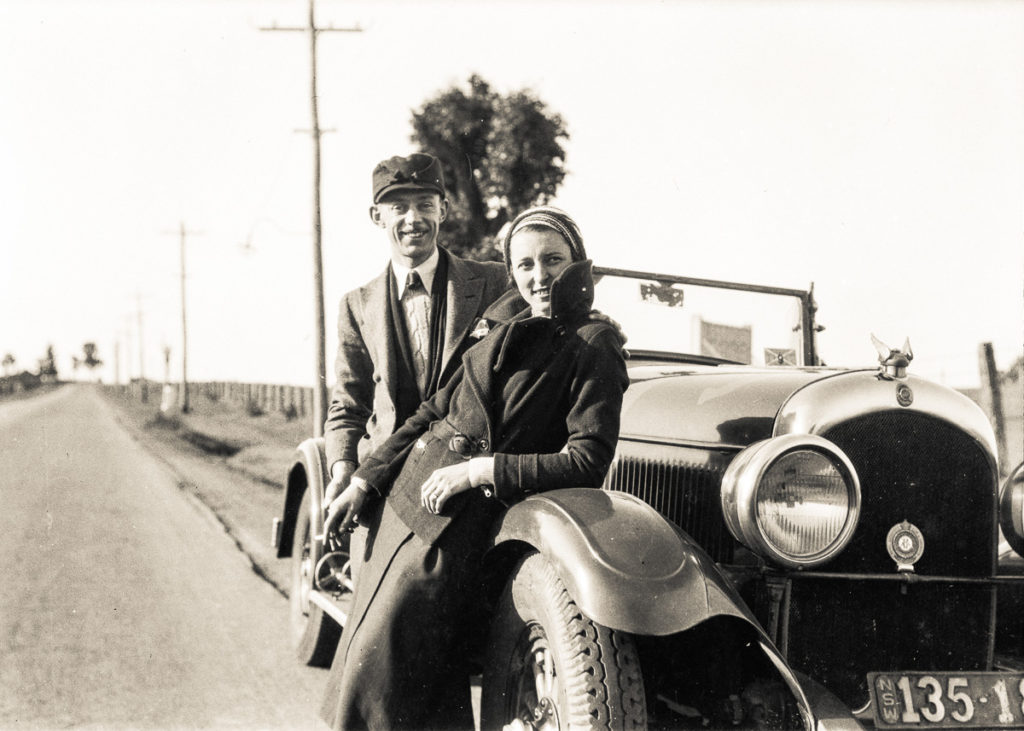
I first met Bill when I was a seventeen year old copy boy in the artist room at the Sydney Daily Telegraph in 1944. He had just returned from New Guinea and I was greatly in awe of him. I had seen his work long before (my father had worked in the publishing rooms of various papers and always brought copies home – the Telegraph, Smith’s Weekly, Women’s Weekly, etc) so I was familiar with his comic illustrations. What I now discovered was his immense versatility in the war paintings he did.
He was probably the first adult I was encouraged to call by his first name. At his insistence he was either Bill or Billy Wep or Bill Pidge. Everyone else was Mr. or Sir. He was very warm, friendly, encouraging and funny.
He had a reputation for heavy drinking being among those that appeared in the pub when they opened at 10a.m.. What very few knew was that he’d already worked six hours, rising at 4a.m.. Newspapers were pretty boozy places anyway so the reputation did him no harm.
I didn’t know Jess at all as she was very sick but I heard a lot about her from his friends and colleagues. I know he adored her and that she was strikingly good looking and that he adored her not only for that but for her spirit and all the qualities she had and shared with others. He nursed her until her tragic death.
He used to come to the Artist’s room to get pencils, ink, white poster colour and paper but would always look at what I was drawing and say things like ‘that’s very funny, do more like that’ or show me the books of the old masters. I remember him showing me a book of Hokusai the Japanese 18th century print maker and telling me that he signed his work ‘An old man mad about drawing’. Bill thought that was marvelous.
Bill would appear always wearing a pork pie hat, always well dressed in a casual way. He had a soft voice, workman like hands with solid blunt fingers (as I well remember, from having one of them down my throat to make me up-chuck some of the excess liquor I’d consumed at the Artists’ Ball so I’d be sober enough to drive home.)
He was great encourager of young talent, Brett Whiteley, Peter Harrigan and me. He even set up a travelling scholarship which I was told later he meant for me but I was in the Army in Japan and madly in love with an American girl and didn’t enter. Peter Harrigan did and deservedly won a year in London. I think he was so in love with drawing and painting and just creating with his hands that when he saw talent in others he couldn’t help but foster and encourage. I remember him showing me a short flight of concrete steps at Northwood. He was so proud of having made them that he signed them Wep.
His friends Geoff Turton, George Finey, Bill Mahony and others told me stories about him shocking a posh dinner party with an oyster stuck in his nostril waggling about. About him taking Lennie Lower away to the Snowy Mountains with instructions not to give Lower any more money than two shillings (20c). Lower went to Cooma with his two shillings and came back rotten drunk with seven and sixpence change. He’d gone into Cooma, told everyone who he was and that he was there with Wep so no-one would let him pay for a drink and actually pressed money on him thus defeating the other instruction ‘sober him up and keep him sober’.
I saw a lot of your father when he was cartooning for the ‘Sunday Tele’ as I was rostered on on Saturdays. We used to drink in the Windsor hotel in Castlereagh St. He had his paper on the bar marking stories that might give him an idea for a cartoon. We’d go back to the canteen for a cold pork sandwich and he’d buy a bottle of dry sherry to share with the women in the Social dept. next door to our rooms.
Ure Smith the publisher got me to design the cover for ‘They’re A Weird Mob’ which I did but came down with appendicitis. Ure Smith asked Bill to illustrate it which was a bit much as he was trying to break away from illustration for serious portraiture and in fact had won his first Archibald [not at that time – 1957]. I think it was when he and your mother were either courting or had just married. I know he visited me in hospital to tell me he would do it. I only mention it because when the book launch was held, the author John O’Grady, a XXXX man at best, made his speech he hoped “You all made enough out of my talents to buy a new suit of clothes.” This was greeted by us all in stunned silence until someone announced that Bill had won his second [actually his first] Archibald. O’Grady was lost in the cheers that went up. O’Grady was very put out.
I met your mother several times both before and after marriage and have fond memories of her.
– Les Tanner, Feb. 2000




![St. Stephen's Church, Phillip Street, Sydney. The church was demolished just after Wep's wedding to make way for the Martin Place extension and a new church built in Macquarie St. [Photo - Sydney Architecture Images- "Gone but not forgotten", St Stephen's Church, http://sydneyarchitecture.com/GON/GON126.htm, viewed 20 Aug 2016]](http://wepidgeon.com/pidgeonpost/wp-content/uploads/2016/08/St-Stephens-GON-126-02.jpg)

